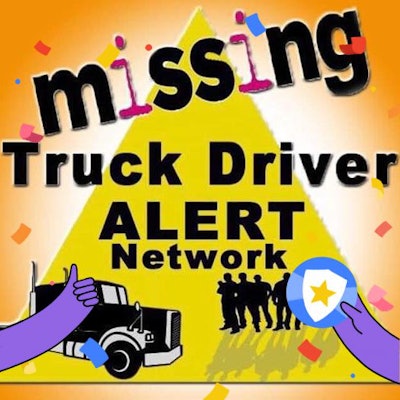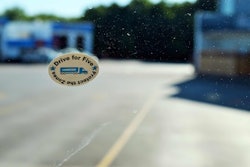How many times a day do you see something and then later you’re triggered to wonder: Just what exactly was that? What was that guy doing? Who were they?
Most days we are likely to shrug off these fleeting types of thoughts until faced with the situation again, when we might take our thoughts and question farther: Did the person need help? Were they in danger?
Driving trucks will condition most professionals to almost automatically notice dangers on the highways – objects in our lane, erratic drivers speeding and weaving, a car approaching an intersection that isn’t going to stop. Developing these instincts is a gift that helps you avoid trouble.
Recently I received notice of a missing driver and truck, and the public was being asked to be on the lookout. This isn’t that uncommon, and the Missing Truck Driver Alert Network and their Facebook group provides a good platform for spreading the word among truckers. If you’re not connected there, I’d encourage you to consider connecting and following their alerts – the group has really been a big help to others. Since beginning in 2012, the network has helped bring closure to nearly 300 cases, and fewer than 10 are still open investigations.
 Follow alerts from the network via their Facebook page at this link.
Follow alerts from the network via their Facebook page at this link.These subjects had me thinking about conversations I’ve had recently with a humble friend and owner, David Zwiers, who noted the hurricanes that have hit near where he lives around Pensacola, Florida, have washed out areas along the coast and changed water flow patterns. Home for the weekend, Zwiers was starting to make his way out to the open water in his boat and saw a man in the water clinging to a dog. There were other people nearby, but something just didn’t look right. David took the time to delay his outing and found the man was near exhaustion and being pulled out from shore by strong currents. He clung to his dog just trying to stay afloat. David’s quick response, throwing him a lifeline, helped save this man’s life.

Given other people in the area, too, showing no concern, how easy it would have been for him just to ignore what he was seeing.
It’s not the first time David has been in such life-or-death situations, which many truckers also, no doubt, can say.
Many of you have an on-truck tool, too, that can provide an assist in learning to recognize just what you’re seeing.
The instillation of dashcam systems has been prolific, often with the end goal of helping protect truck drivers and companies from potential liability issues. But what of the other surrounding conditions, activities and people captured on these recordings that could lead to help when property is damaged or someone has been injured — or worse — before or after an event.
Owner-operator Alec Costerus of Colorado happened into one very extreme situation driving on northern end of the AlCan Highway in British Columbia, Canada, heading to deliver in Alaska. There’s usually not a lot of activity or traffic on these very remote highways. It’s easy to settle into a state of calm, driving alone, when perhaps the biggest concern might be hitting a moose or some other species of wildlife. This particular day was going to be much different, as it turned out.
Flashing lights ahead appeared to indicate a much bigger issue.
Costerus learned authorities were responding to a murder along the highway. Royal Mounted Police were asking questions as their preliminary investigation got under way, right here in front of him. Where are you coming from? On what routes? Any suspicious vehicles or people? What times of day? Imagine yourself in a similar situation. How much would you really recall? Costerus’s quick thinking led to his recommendation that the police reach out to the truck drivers passing though the checkpoints in the area to ask about viewing their dashcam video footage for anything that might help.
The perpetrators were eventually identified, and the crime was solved. Costerus didn’t know whether any information from truck drivers or their videos helped, but the RMP did post on the electronic billboards seeking any information from motorists after his conversation.
There is more value in these recordings than just liability protection, of course. Costerus’s camera helped exonerate another truck driver in a truck stop accident when a stop employee was speeding through the parking lot and broadsided a truck. This driver, new to the business, was already on company probation — without the Costerus’s willingness to come forward with video, the driver said he would have lost his job.
Your first thought in such an instance may be that you don’t want to get involved, but next time remember what Costerus did for this young person.
Personally, I learned a lot from my own dashcam videos after I began reviewing them periodically some years ago. They helped to draw to my attention not only to unsafe driving around me but my own behaviors, including my following distance. This helped me improve my decisions, and safety.
Be sure you know how to save and share recordings. I’ve had safety department staff tell me that a high percentage of drivers are unable to replay their recordings, rendering this investment worthless — one more reason to set a reminder in our calendar to test our dashcams, downloading and replaying clips to ensure they’re working properly. If you’re in a situation where you needed to have an officer view the recording, you need to be confident.











